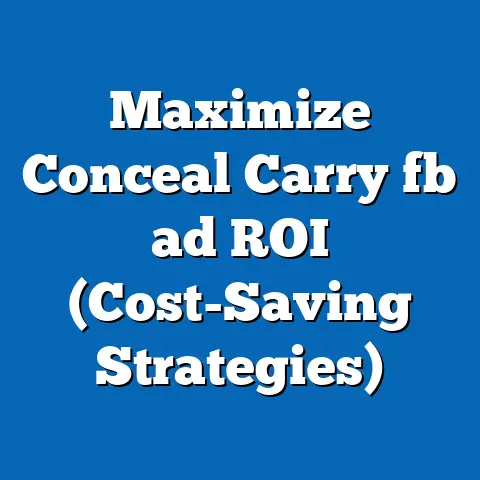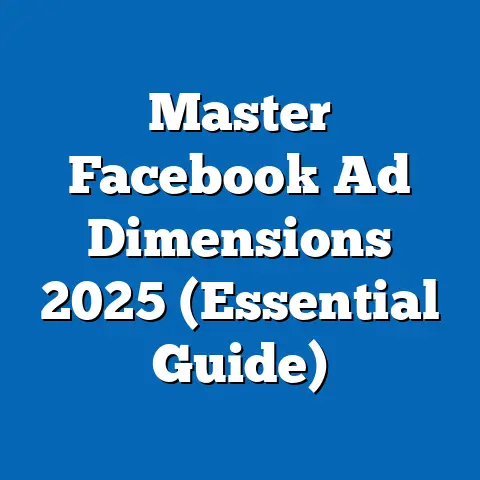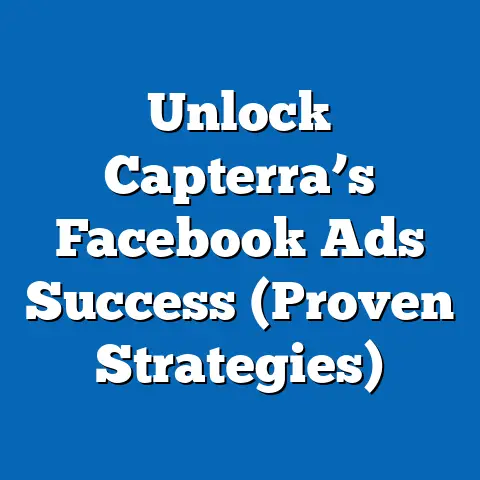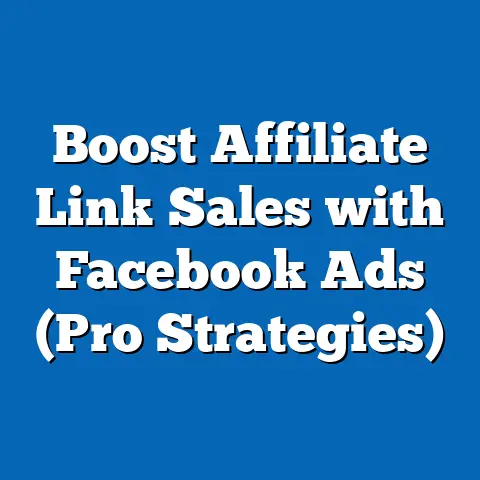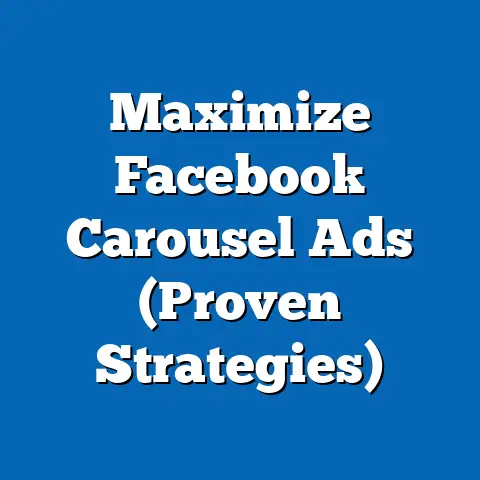Facebook Ads Manager vs Boost Post (Decoding Choices)
In the ever-evolving landscape of digital marketing, businesses and individuals alike are constantly seeking effective ways to reach their target audiences on social media platforms like Facebook. With over 2.9 billion monthly active users as of 2023, according to Statista, Facebook remains a powerhouse for advertising, offering tools that cater to a wide range of marketing needs and budgets. Two of the most popular options for promoting content on the platform are Facebook Ads Manager and Boost Post, but how do you decide which one is right for your goals?
Whether you’re a small business owner, a seasoned marketer, or a content creator, decoding the choice between Facebook Ads Manager and Boost Post is essential for optimizing your digital presence. Let’s dive into the intricacies of these tools and uncover how they fit into the larger narrative of generational trends and societal shifts in the digital age.
Section 1: Defining the Tools – What Are Facebook Ads Manager and Boost Post?
1.1 Understanding Facebook Ads Manager
Facebook Ads Manager is a comprehensive advertising platform designed for users who seek granular control over their campaigns. It allows advertisers to create, manage, and analyze ads across Facebook, Instagram, Messenger, and the Audience Network. Launched as a centralized hub for advertising in 2012, Ads Manager provides access to advanced targeting options, multiple ad formats (such as carousel, video, and dynamic ads), and detailed performance metrics.
One of the defining characteristics of Ads Manager is its depth. Users can define custom audiences based on demographics, interests, behaviors, and even upload their own customer lists for retargeting. Additionally, it supports A/B testing, budget optimization across ad sets, and integration with third-party analytics tools.
This tool is ideal for businesses or marketers running complex campaigns with specific objectives, such as lead generation, app installs, or e-commerce conversions. However, its steep learning curve can be intimidating for beginners, requiring time and expertise to master.
1.2 Understanding Boost Post
Boost Post, on the other hand, is a simplified advertising feature introduced by Facebook in 2012 as a way to make advertising accessible to users with minimal experience. It allows page owners to promote an existing post directly from their Facebook Page with just a few clicks. Unlike Ads Manager, Boost Post is embedded within the platform’s interface, making it user-friendly and quick to deploy.
The defining characteristic of Boost Post is its simplicity. Users can select a post, set a budget, choose a target audience from basic options (like location, age, and interests), and extend the post’s reach beyond organic followers. However, it lacks the advanced customization and optimization features of Ads Manager, limiting its use to basic engagement or awareness goals.
This tool is often favored by small businesses, local establishments, or individuals who want to increase visibility without delving into complex campaign structures. Yet, its limited functionality can lead to inefficient ad spend if not used strategically.
Section 2: Historical Context – The Evolution of Facebook Advertising
2.1 The Rise of Social Media Advertising
To fully appreciate the differences between Ads Manager and Boost Post, it’s crucial to understand the historical context of social media advertising. When Facebook launched in 2004, it was primarily a platform for personal connections, devoid of commercial intent. By 2007, however, the introduction of Facebook Ads marked the beginning of its transformation into a marketing juggernaut.
Initially, ads were basic, sidebar placements with limited targeting options. The launch of the News Feed in 2006 opened new avenues for integrating ads seamlessly into user experiences, setting the stage for tools like Boost Post and Ads Manager. According to a 2012 report by eMarketer, Facebook’s ad revenue surged to $5 billion that year, reflecting the growing demand for social media advertising amid the digital revolution.
2.2 The Introduction of Boost Post and Ads Manager
The year 2012 was pivotal for Facebook’s advertising ecosystem. Boost Post emerged as a response to small businesses and individual page owners who wanted to amplify their content without navigating complex systems. It democratized advertising by lowering the barrier to entry, aligning with the broader societal shift toward entrepreneurship and personal branding in the early 2010s.
Concurrently, Ads Manager was introduced as a more robust solution for professional marketers and larger businesses. It evolved from earlier tools like the self-serve ad platform, incorporating features from acquisitions like Atlas (a digital marketing platform acquired in 2013). This period coincided with the rise of data-driven marketing, as businesses sought precision in targeting amid growing competition for consumer attention.
2.3 Societal and Technological Influences
The development of these tools reflects broader societal trends, including the rapid adoption of smartphones and the shift toward mobile-first experiences. By 2015, mobile ad revenue accounted for 76% of Facebook’s total ad revenue, as reported by the company’s Q4 earnings. This shift influenced how tools like Boost Post were designed for quick, on-the-go use, while Ads Manager adapted to support cross-platform campaigns.
Additionally, generational dynamics played a role. Millennials, who were entering the workforce and starting businesses during the early 2010s, embraced Boost Post for its accessibility, while Gen X marketers, often in leadership roles, gravitated toward Ads Manager for its strategic depth. These tools, therefore, mirror the diverse needs of a multigenerational user base navigating the digital economy.
Section 3: Key Differences – A Side-by-Side Comparison
3.1 Functionality and Features
When choosing between Ads Manager and Boost Post, understanding their functional differences is critical. Ads Manager offers a wide array of ad objectives (e.g., traffic, conversions, brand awareness), placement options (including Stories and in-stream video), and detailed analytics like cost-per-click (CPC) and return on ad spend (ROAS). It’s a full-fledged tool for creating campaigns from scratch, tailored to specific business goals.
Boost Post, conversely, is limited to promoting existing posts with basic objectives like engagement or reach. It offers fewer targeting options and lacks advanced analytics, focusing instead on ease of use. For instance, while Ads Manager allows pixel tracking for website conversions, Boost Post is confined to on-platform metrics like likes and shares.
3.2 Target Audience and Customization
Targeting capabilities further distinguish these tools. Ads Manager provides access to Custom Audiences, Lookalike Audiences, and detailed demographic filters, enabling precise audience segmentation. This is invaluable for businesses with niche markets or complex customer journeys, as it allows for personalized messaging.
Boost Post offers basic targeting, such as age, gender, location, and a handful of interests. While sufficient for local businesses or broad campaigns, it lacks the sophistication needed for retargeting or behavioral targeting. This limitation can result in less efficient ad spend, especially for larger campaigns.
3.3 Cost and Budget Control
Cost structures also vary significantly. Ads Manager allows users to set daily or lifetime budgets at the campaign or ad set level, with options for bid strategies like lowest cost or target cost. According to a 2022 study by WordStream, average CPC in Ads Manager ranges from $0.50 to $2.00, depending on industry and targeting, offering flexibility for optimization.
Boost Post requires a minimum budget (often as low as $1 per day) but lacks advanced bid control. Costs can escalate quickly if the audience is broad or engagement is low, with less transparency into performance metrics. This makes it less cost-effective for sustained campaigns compared to Ads Manager.
3.4 Learning Curve and Accessibility
Finally, accessibility is a key differentiator. Boost Post is designed for beginners, requiring minimal setup time—often just a few minutes to launch a campaign. It’s ideal for users unfamiliar with digital advertising or those testing the waters.
Ads Manager, while powerful, demands a steeper learning curve. Navigating its interface and understanding metrics like impressions versus reach can be daunting without training. However, resources like Facebook Blueprint (a free learning platform) have made it more accessible over time, catering to a wider range of users.
Section 4: Generational and Societal Implications
4.1 Generational Adoption and Preferences
The choice between Ads Manager and Boost Post often reflects generational attitudes toward technology and marketing. Millennials (born 1981–1996), who grew up alongside the internet, are more likely to experiment with both tools, valuing Boost Post for quick campaigns and Ads Manager for scaling businesses. A 2021 Pew Research study found that 70% of Millennials engage with social media ads, indicating high comfort with platforms like Facebook.
Gen Z (born 1997–2012), on the other hand, prioritizes authenticity and visual content, often using Boost Post to amplify organic posts on platforms like Instagram (via Facebook’s ecosystem). Their preference for simplicity aligns with Boost Post’s design, though many are learning Ads Manager as they enter entrepreneurial roles. Meanwhile, Gen X (born 1965–1980) and Baby Boomers (born 1946–1964) in managerial positions often rely on Ads Manager for its data-driven insights, reflecting their focus on ROI and strategic planning.
4.2 Economic and Cultural Impacts
Economically, these tools have democratized advertising, enabling small businesses and solopreneurs to compete with larger corporations. Boost Post, in particular, has empowered local businesses—such as restaurants and boutiques—to reach nearby customers without significant investment. A 2020 Facebook report highlighted that 74% of small businesses saw increased sales after using boosted posts, underscoring its role in economic recovery post-pandemic.
Culturally, the rise of targeted advertising via Ads Manager has sparked debates over privacy and data ethics. High-profile events like the 2018 Cambridge Analytica scandal, where user data was misused for political ads, have heightened scrutiny of platforms like Facebook. Ads Manager’s advanced targeting capabilities, while powerful, raise questions about surveillance and consumer autonomy, especially among younger generations like Gen Z who value transparency.
4.3 Workplace and Marketing Dynamics
In the workplace, the choice of tool influences team dynamics and skill requirements. Ads Manager often necessitates dedicated digital marketing roles or agencies, as seen in larger firms where 62% of marketers use it for campaigns, per a 2022 HubSpot survey. This reflects a shift toward specialization in marketing roles, particularly among younger workers entering the field.
Boost Post, conversely, enables non-specialists to engage in advertising, fostering inclusivity in smaller teams. However, reliance on Boost Post can limit long-term growth, as it lacks the scalability of Ads Manager. This dichotomy shapes how businesses allocate resources and train staff across generational lines.
Section 5: Practical Applications – How to Choose the Right Tool
5.1 When to Use Boost Post
Boost Post is best suited for quick, low-budget campaigns focused on engagement or local reach. For example, a café promoting a weekend special can use Boost Post to target users within a 5-mile radius, spending as little as $10 to increase visibility. It’s also effective for testing content ideas before investing in a larger campaign.
However, users must be cautious of over-reliance. Without precise targeting, boosted posts can reach irrelevant audiences, wasting budget. It’s recommended to use Boost Post for short-term goals and organic content amplification rather than sustained marketing efforts.
5.2 When to Use Ads Manager
Ads Manager shines in scenarios requiring detailed strategy and measurable outcomes. E-commerce brands, for instance, can use it to retarget website visitors with dynamic product ads, optimizing for conversions. Its ability to manage multiple campaigns simultaneously makes it ideal for businesses with diverse objectives or audiences.
The trade-off is time and expertise. Setting up a campaign in Ads Manager can take hours or days, and ongoing optimization is necessary for success. Businesses should invest in training or hire specialists to fully leverage its potential.
5.3 Hybrid Approaches and Best Practices
Many successful marketers adopt a hybrid approach, using Boost Post for initial testing and Ads Manager for scaling. For instance, a boosted post with high engagement can be repurposed into a full campaign in Ads Manager with refined targeting. This strategy balances ease and precision, catering to varying skill levels and budgets.
Best practices include setting clear objectives before choosing a tool, monitoring performance regularly, and aligning campaigns with audience preferences. Generational insights—such as Gen Z’s preference for video content—should inform creative decisions, regardless of the tool used.
Section 6: Broader Implications for Society and Business
6.1 The Democratization of Marketing
Both Ads Manager and Boost Post have contributed to the democratization of marketing, allowing individuals and small entities to build brands online. This aligns with societal shifts toward gig economies and personal branding, particularly among Millennials and Gen Z. However, disparities in digital literacy—often along generational or socioeconomic lines—can limit access to these benefits, highlighting the need for education and support.
6.2 Privacy and Ethical Considerations
The societal impact of targeted advertising cannot be ignored. Ads Manager’s reliance on user data raises ethical concerns, especially as regulations like the General Data Protection Regulation (GDPR) reshape how platforms operate. A 2023 survey by Deloitte found that 64% of consumers worry about data privacy on social media, a sentiment strongest among younger generations.
Businesses using these tools must prioritize transparency, ensuring compliance with laws and fostering trust. Failure to do so risks backlash, as seen in public responses to data breaches and misuse.
6.3 Future Trends and Uncertainties
Looking ahead, the evolution of Facebook advertising will likely be shaped by emerging technologies like artificial intelligence (AI) and augmented reality (AR). Ads Manager could integrate more AI-driven optimization, while Boost Post may expand to support immersive formats. However, uncertainties remain, including potential regulatory changes and shifts in user behavior as younger generations gravitate toward platforms like TikTok.
The metaverse, a concept championed by Meta (Facebook’s parent company), could redefine how these tools operate, blending virtual and physical advertising spaces. While speculative, such developments underscore the need for adaptability in digital marketing strategies.
Conclusion: Making Informed Choices in a Digital Age
Decoding the choice between Facebook Ads Manager and Boost Post is more than a technical decision—it’s a reflection of broader generational, societal, and economic dynamics. Ads Manager offers unparalleled control and scalability for strategic campaigns, catering to businesses with complex goals and skilled teams. Boost Post, with its simplicity, empowers beginners and small entities to participate in the digital marketplace, aligning with trends toward inclusivity and entrepreneurship.
As we’ve explored, these tools emerged from historical shifts in technology and consumer behavior, shaped by events like the mobile revolution and data privacy scandals. Their implications extend beyond marketing, influencing workplace roles, cultural attitudes toward privacy, and economic opportunities across generations. While Millennials and Gen Z may favor different approaches based on comfort with technology, the diversity within each cohort reminds us to avoid oversimplification.
Looking forward, the future of Facebook advertising is uncertain yet promising. Marketers must stay agile, balancing innovation with ethical considerations, as societal expectations evolve. By understanding the strengths and limitations of Ads Manager and Boost Post, and aligning choices with generational insights and business needs, you can navigate the digital landscape with confidence—decoding not just tools, but the cultural currents that shape their impact.
Ultimately, the decision rests on your objectives, resources, and willingness to adapt. Whether you’re boosting a single post or crafting a multi-faceted campaign, the power of Facebook advertising lies in its ability to connect, engage, and transform—provided you choose wisely.

